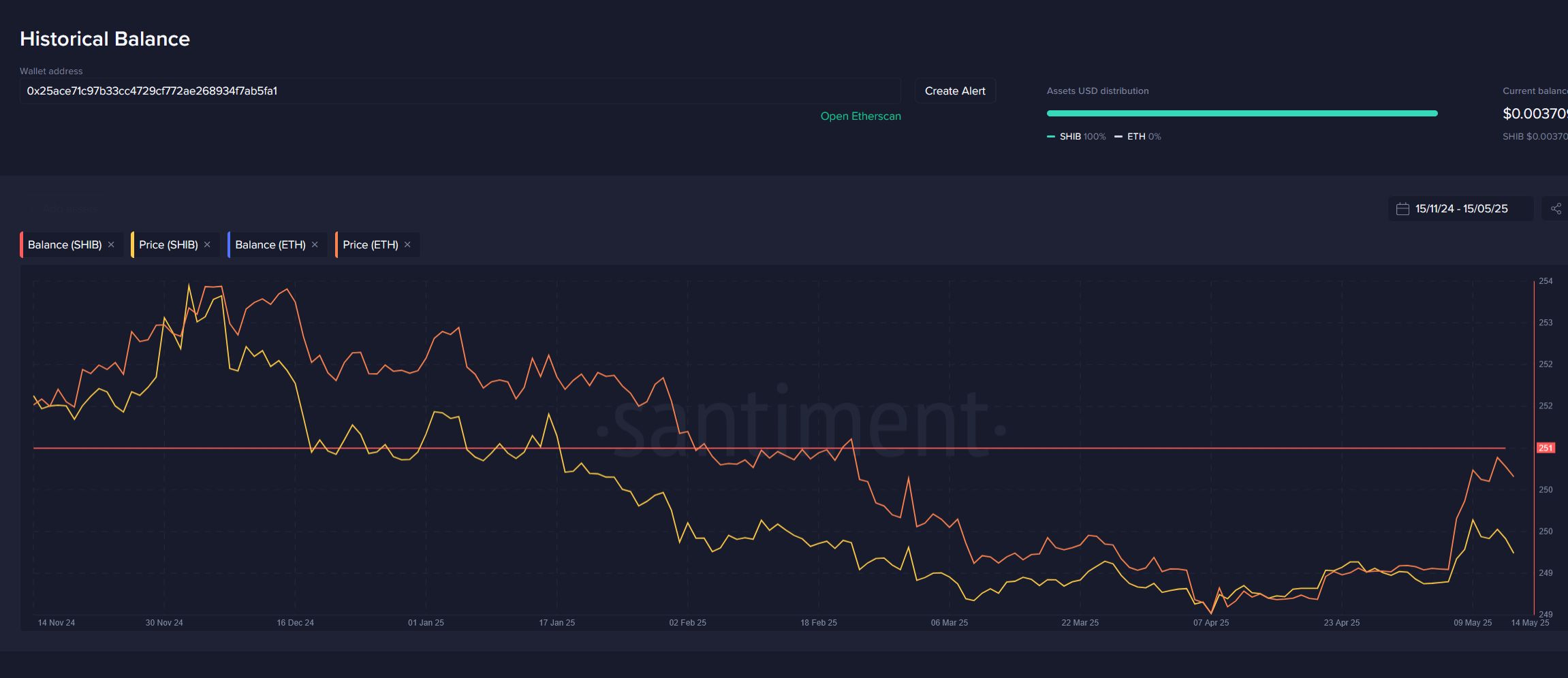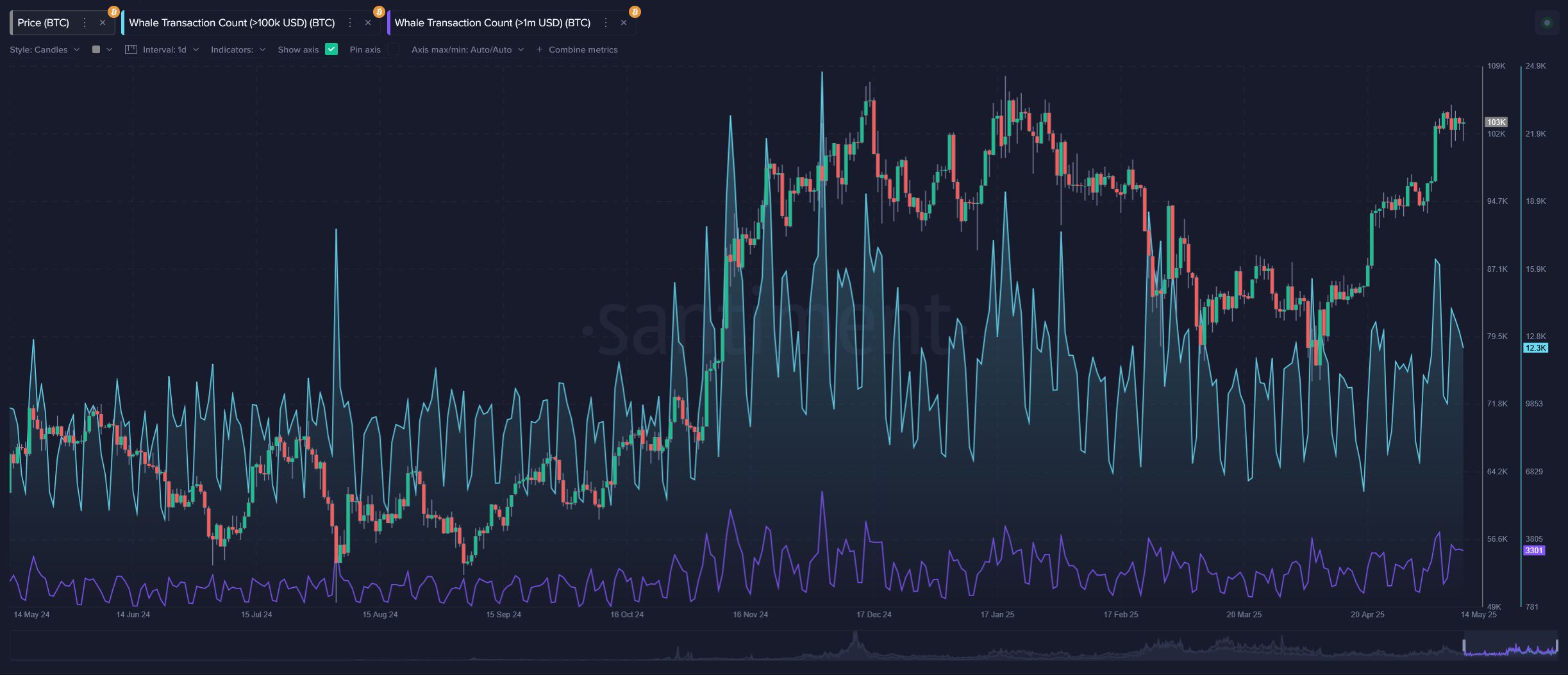Whale Monitoring to Predict Crypto's Next MovesKey Stakeholder Tiers (Supply Distribution):Specific Key Stakeholders Wallets:Whale Transaction Spikes
From time to time, it's important to check on how cryptocurrency whales are treating their bags. Generally, if they're accumulating, it's a good sign crypto market caps are continuing to rise. If they're moving many coins to exchanges, on the other hand, it's a sign that a dump may be around the corner.
There are several different methods to monitor whale activity on Santiment. Let's go through a few of the most efficient ones:
Key Stakeholder Tiers (Supply Distribution):
One of the best ways to get an idea of what whales are collectively doing with their coins is by checking out the total holdings of key large whales that tend to control the destiny of future price movements. For Bitcoin, we generally suggest checking out the wallets holding 10 or more BTC (currently about $1M or more) or, more specifically the wallets holding between 10 to 10K BTC. You can see them, and a few other .

For most altcoins, since their market caps aren't nearly as massive as Bitcoin's you can use a rule of thumb of finding the tier closest to $100K, and ranging up to the tier closest to $10M. This range will typically (not always, but usually) have some of the highest correlation on price movements.
An easy way to create your own tiers and track groups of collective whale wallets is to:
1) Go to "Balance of Addresses" on the left panel, and add it to your current chart template.
2) Click on the "Merge" button on the chart tools that were added to your chart template.
3) Hit the checkmarks next to the tiers you'd like (do the math to calculate how many coins equal $100K up to $10M)
4) Hit the confirm button
Specific Key Stakeholders Wallets:
Another method to keep tabs on whales is by opening the . For any asset that has whale metrics on the platform, you will be presented with the 50 largest transfers over the past 30 days. This table is complete with the date and time each transaction occurred, as well as the wallet they sent to, and the raw transaction hash link for further analysis/investigation.

You can either get to it from opening the linked text in the last paragraph, or by going to the Charts page on Santiment, and searching for "Top Transactions" in the left search bar, and double clicking the metric to add it to the current chart.
To take things further, you can always look up a specific wallet on Santiment's page to see how any wallet's coin holdings have fluctuated over time. This feature also shows every coin currently held within the wallet, as well as the total USD holdings of the wallet. This can be highly useful when looking for specific whale addresses that have a fairly strong correlation with where markets tend to move next.

If you see the chart page show up as blank, it may be because the wallet isn't Bitcoin-based, Ethereum-based, or Litecoin-based. We do plan to have this feature get further support for more networks down the road, though.
Whale Transaction Spikes
For a more simplistic way to recognize when an asset's price pattern may be about to change, check out the amount of "whale transactions" that exceed a value of $100K or more, or $1M or more. You can find the .
An asset like Bitcoin, being the largest market cap in crypto, will naturally have tens of thousands of $100K+ whale transactions on any given day. But if you venture outside the top 250 market caps or so, you'll come across coins that only see 1 or 2 on any given day.

Whether the coin is a big or small asset, though, you'll still likely find value in seeing when whales are becoming active again. Many make the mistake of assuming that an increase in whale transactions is always a bullish sign. In actuality, it is a sign of volatility and price direction change. When whales make large transfers, they could equally be accumulating or dumping. So that's why it can be very useful to reference it in tandem with the Key Stakeholder Tiers.
Whale CEX Deposit Dashboard
Often times, you may not be sure of what asset you are looking for, and you simply want to see which coins may suddenly be getting significantly moved by whales. We specifically have built a dashboard for tracking when large batches of any coin are moving to centralized exchanges. This is especially useful as a warning sign that a coin's price may soon dump, and it's a good time to take profit. Coins typically move from cold wallets to centralized exchanges for one reason, and it's to sell them.

We have written a couple of comprehensive articles about how to effectively use this dashboard and . And we definitely encourage you to check them out to begin utilizing this helpful tool.
Do you have some other ways you like to track whale activity on Santiment? Let us know what you think about our suggestions, or if you have further ideas of your own. We may just integrate more features if you have an idea on more useful blockchain data scraping!
-----
Free two-week trials to Sanbase PRO (to access all mentioned Santiment data in this article, and plenty more) are
-----
Disclaimer: The opinions expressed in the post are for general informational purposes only and are not intended to provide specific advice or recommendations for any individual or on any specific security or investment product.
Disclaimer: The content of this article solely reflects the author's opinion and does not represent the platform in any capacity. This article is not intended to serve as a reference for making investment decisions.
You may also like
Bitget Spot Margin Announcement on Suspension of DOG/USDT, ORDER/USDT, BSV/USDT, STETH/USDT Margin Trading Services
BGB holders' Christmas and New Year carnival: Buy 1 BGB and win up to 2026 BGB!
Bitget Trading Club Championship (Phase 20)—Up to 2400 BGB per user, plus a RHEA pool and Mystery Boxes
Subscribe to ETH Earn products for dual rewards exclusive for VIPs— enjoy up to 8% APR and share 30,000 USDT!
